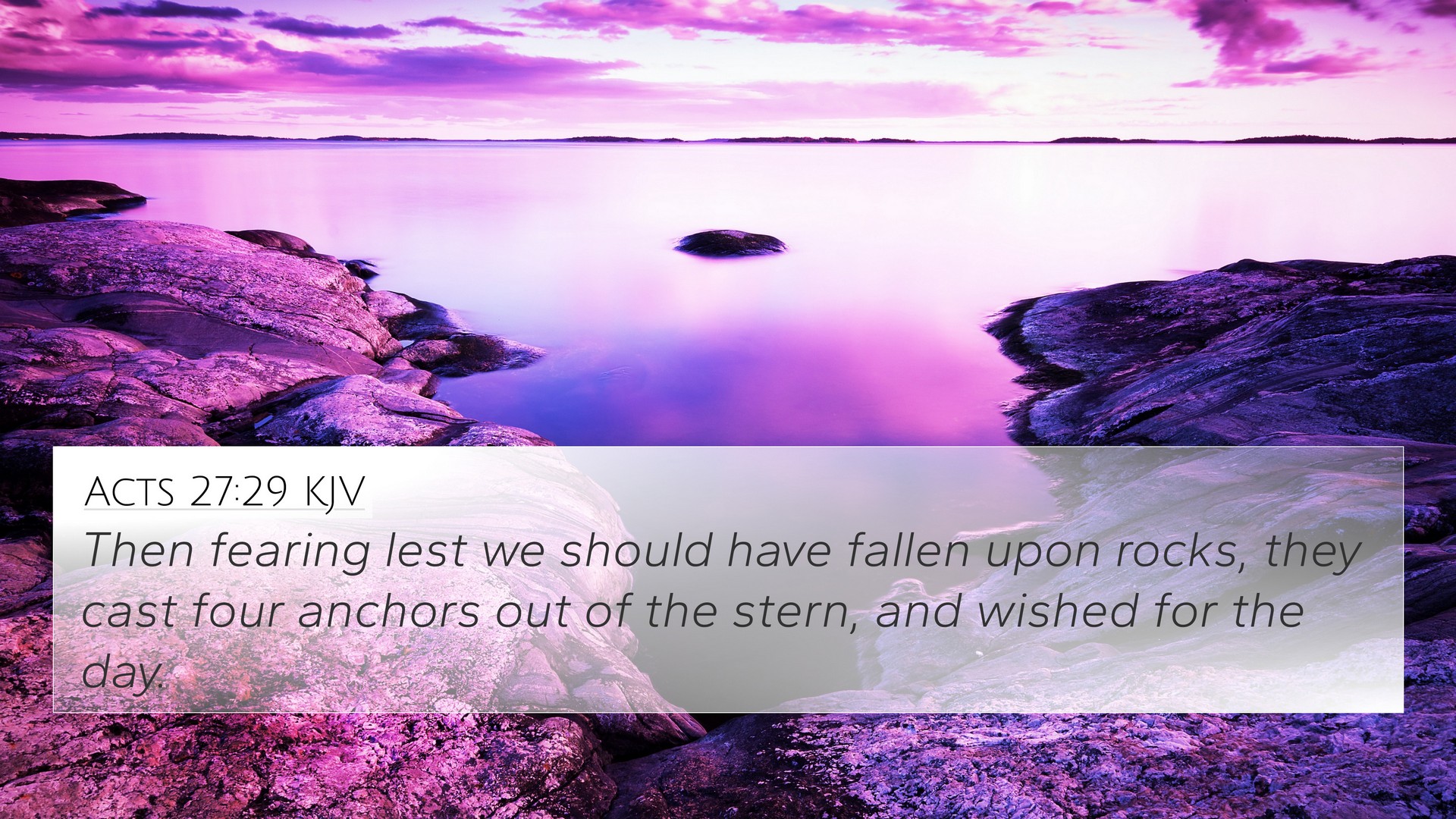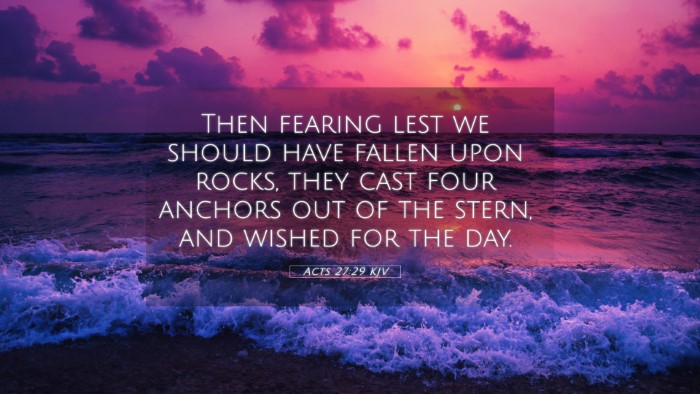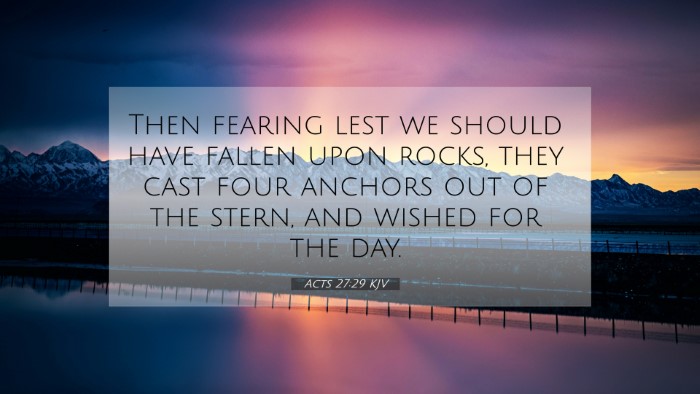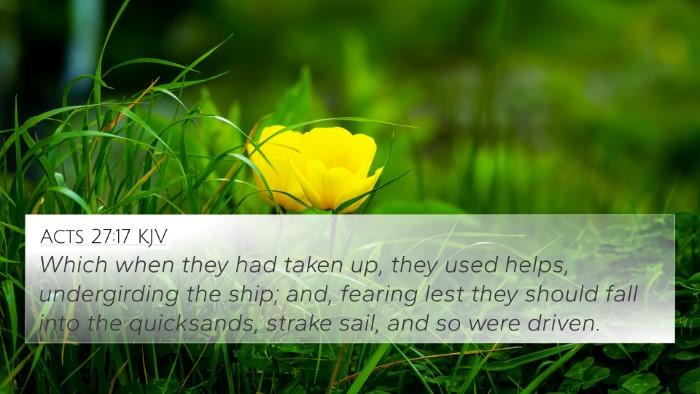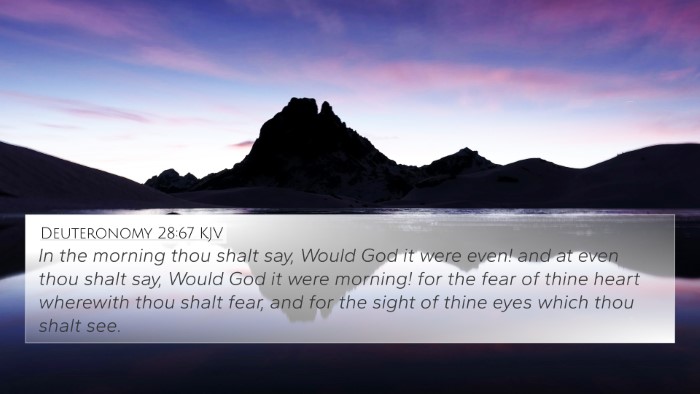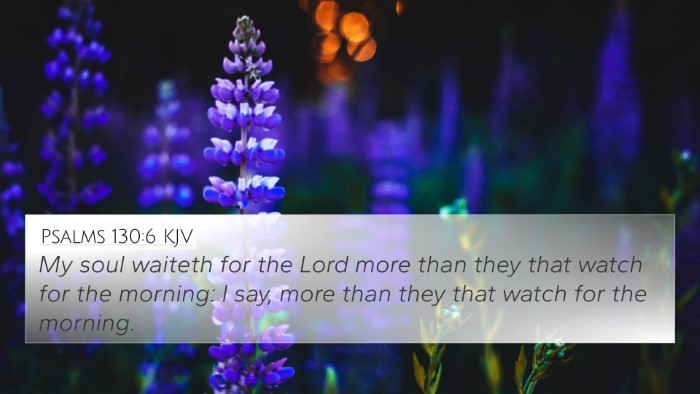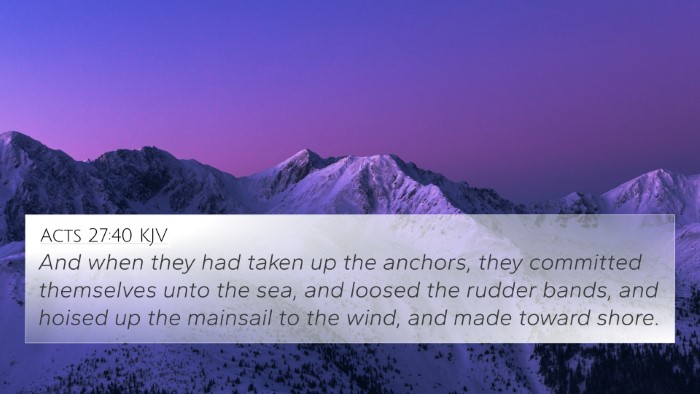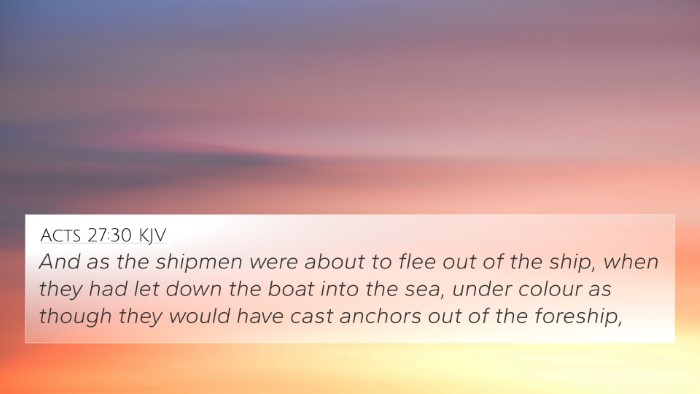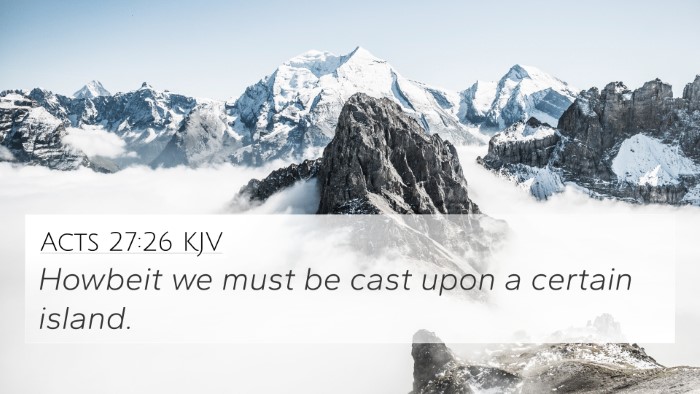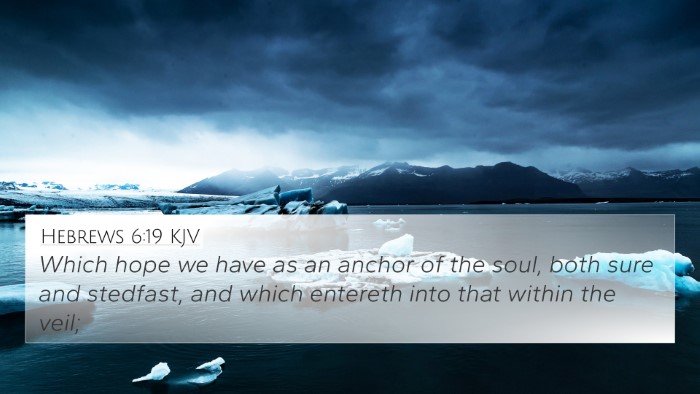Understanding Acts 27:29 - A Summary of Insights from Public Domain Commentaries
Acts 27:29 states: "Then fearing lest we should have fallen upon rocks, they cast four anchors out of the stern, and wished for the day." This verse depicts a moment of desperation among the sailors during a tumultuous sea voyage, illustrating profound themes of fear, caution, and the hope that dawn brings. To understand this verse more deeply, we’ll explore insights from various commentaries, highlighting connections between Bible verses and drawing thematic parallels.
Verse Context and Analysis
Matthew Henry comments on this passage, emphasizing the sailors' fear of running aground during a storm. They took practical measures—casting anchors to stabilize the ship—which symbolizes human effort in the face of looming disaster. Henry notes that it reflects a desire for security and control amidst chaos, a universal human experience relevant throughout Scripture.
Albert Barnes adds that the act of casting anchors reveals a reliance on physical means for safety before divine intervention becomes visible. He underscores that wishing for daylight represents the human hope for deliverance and clarity in times of uncertainty, relating it to broader themes in Scripture about seeking light and guidance from God during trials.
Adam Clarke elaborates on the significance of wishing for the day; this yearning signifies a longing for rescue and hope. He views the act of anchoring as a metaphor for stabilizing oneself through faith amidst life's storms, which invites a comparative analysis of biblical verses focusing on hope and faith.
Thematic Connections and Cross-References
Acts 27:29 reflects several key themes found throughout Scripture. Here are some relevant cross-referenced verses to enrich understanding:
- Psalm 107:29: "He maketh the storm a calm, so that the waves thereof are still." - Emphasizes God's power over tumultuous situations.
- Isaiah 41:10: "Fear thou not; for I am with thee: be not dismayed; for I am thy God." - Reinforces the message of God's presence in fear.
- Matthew 8:26: "But he saith unto them, Why are ye fearful, O ye of little faith?" - Highlights the struggle between fear and faith.
- 2 Corinthians 5:7: "For we walk by faith, not by sight." - Reminds believers to trust in God beyond visible circumstances.
- Philippians 4:6-7: "Be careful for nothing; but in every thing by prayer and supplication... and the peace of God shall keep your hearts." - Discusses handling anxiety through prayer.
- Hebrews 6:19: "Which hope we have as an anchor of the soul, both sure and steadfast." - Links the concept of hope and spiritual anchoring.
- Romans 15:13: "Now the God of hope fill you with all joy and peace in believing." - Connects hope and peace in the believer's life.
- 1 Peter 5:7: "Casting all your care upon him; for he careth for you." - Encourages reliance on God during troubling times.
- John 16:33: "In the world ye shall have tribulation: but be of good cheer; I have overcome the world." - Jesus reassures believers of His victory over life's challenges.
- Proverbs 3:5-6: "Trust in the LORD with all thine heart; and lean not unto thine own understanding." - Urges trust in God versus human wisdom.
Connections with Other Biblical Texts
The desire for daybreak in Acts 27:29 echoes the frequent biblical imagery of light overcoming darkness, a motif present in both the Old and New Testaments. Throughout Scripture, the contrast between light and darkness serves as a metaphor for salvation, revelation, and hope. Exploring these thematic Bible verse connections can illuminate various passages where light signifies divine intervention or guidance, linking this moment of yearning with their overarching significance in biblical narrative.
Using Cross-References for Deeper Understanding
Utilizing tools for Bible cross-referencing enhances the study of Scripture. By engaging in bible cross-reference analysis, readers can uncover insights about God’s continual guidance through tumultuous seasons of life, just as the sailors sought safety through anchoring amid a storm. This can support a deeper understanding of how similar experiences have been depicted across different writings within the Bible.
Conclusion
Acts 27:29 is a profound reminder of human vulnerability and the innate desire for safety and clarity during life’s storms. Through careful examination and comparative analysis of parallel scriptures, readers can gain insights into the rich tapestry of God’s promises and assurances throughout the Bible. As with the sailors’ hope for daybreak, believers are reminded to cast their anxieties upon God, persistently seeking light and reassurance amidst darkness.
